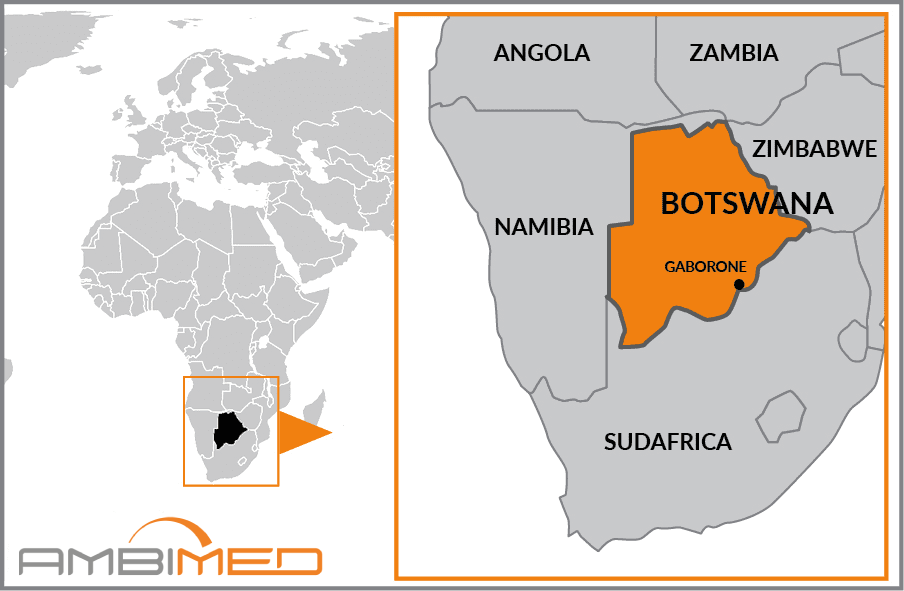Ambimed-Group
Travel Medicine
Business Travel Medicine
Easily manage your reservations and stay constantly updated on Ambimed services.

|
Country Name |
Republic of Botswana |
|
Continent |
Africa |
|
Surface area |
581,730 km² |
|
Capital |
Gaborone |
|
Population |
2,350,000 |
|
Language |
English, Tswana |
|
Currency |
Pula (BWB) |
|
Time zone |
+1hr in relation to Italy |
|
Area code for Italy |
0039 |
|
Area code from Italy |
00267 |
Yellow fever vaccination is mandatory for all travelers over 1 year old from at-risk countries or who have transited for more than 12 hours at airports in at-risk countries.
Cholera is transmitted through infected food and water. Vaccination is especially recommended if you will be travelling to rural areas where it is widespread and access to clean water is limited.
Hepatitis A is generally transmitted through contaminated food and water, or through close physical contact with an infected person, while hepatitis B is transmitted through exposure to infected body fluids and blood.
Infection typically occurs through contact with the saliva of an infected animal, usually through bites, scratches or licks near open wounds or membranes (mouth, nose, eyes). The most common vectors are dogs and bats, but cases of infection in other domestic animals have also been reported.
Caused by toxins released by the bacterium Clostridium tetani, there is an endemic risk of contracting tetanus throughout the country.
Bacterial in origin, typhoid fever is transmitted through contaminated food and drink, especially in regions where sanitation conditions are poor.
Tuberculosis is an airborne disease of bacterial origin. Vaccination is recommended for all travelers at risk of developing severe symptoms or of coming into contact with infected individuals. It is likewise recommended for all travelers under the age of 16 who plan to reside in the country for more than 3 months
Malaria, transmitted by mosquito bites, is widespread throughout the country. As a vaccine is not yet available, you are advised to take both behavioural and, following medical consultation, pharmacological preventive measures.
Diseases such as Leishmaniasis and Japanese River Typhus are found in Southeast Asia. Transmitted by insect bites and with no vaccine, it is important to take preventive measures with behavioural prophylaxes.
The following vaccinations are strongly recommended as these diseases can be contracted anywhere in the world. Experts advise that you protect yourself and other travellers by making sure you are up-to-date with all of the recommended vaccinations. This will allow you to travel safely, while minimising the risk of exposure to infection.
Zambia is a Southern African state that borders Zambia to the north, Namibia to the north and west, South Africa to the south and southeast, and Zimbabwe to the northeast.
The territory consists of a plateau, with an average altitude of approximately 1,000 metres. The northern area is crossed by the Okavango River, which has its delta here, giving rise to a vast swampy region. This is where the most intense rainfall (however, generally low) occurs, which is concentrated in the summer season between October and March. Rainfall gradually decreases as you head southward, feeding the central savannas, petering out almost to non-existence in the Kalahari Desert in the northern part of the country. The climate is very hot during the summer and mild during the rest of the year.